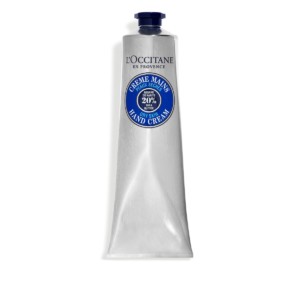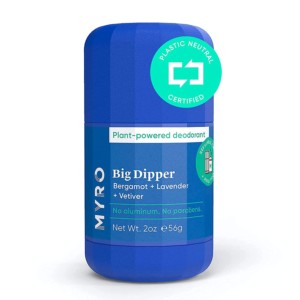
5 Sustainable Product Trends to Watch in 2023
We are reader-supported. When you buy through links on our site, we may earn affiliate commission.
Consumers care more about sustainable product trends and the environment and want to see that care within their favorite brands. Businesses have an enormous responsibility to translate a genuine dedication to sustainability within their products when consumerism is inherently unsustainable, especially with modern shopping habits.
These priority shifts are making companies get creative. They have to fashion products that maintain quality and value while seeking more eco-friendly methods to source materials, manufacture the item and ship it to customers within their target market’s means. These product trends will be next in the green shopping world in 2023.
1. Refillable Products
One of the ways to reduce waste generation and energy consumption is by eliminating aspects of the product — one of the most apparent is the packaging. Businesses can design a product where customers buy the packaging once and purchase refills sans box or bottle — sometimes on a subscription basis.
Sometimes this means changing a product’s formula or composition to become less prone to temperature or exposure influences, like oxidizing skincare. However, companies are willing to invest because customers are more willing to pay top-dollar for eco-friendly companies.
Refillable products reduce a company’s expenditure on container creation and a consumer’s waste disposal. Products include:
- Food items, like reusable mason jars for buying bulk spices.
- Skincare, like using glass containers to top off serums.
- Cleaning agents, like dissolvable cleaning tablets customers drop in water.
- Supplements, like vitamins that come in biodegradable wrapping.
Companies will want to invest in reusable and refillable packaging because it saves them time during manufacturing. Plus, fewer resources go into material extraction, protecting environments from damage and excessive fuel usage.
2. Reimaged Packaging
More companies are switching from plastic or non-recyclable product packaging to biodegradable and compostable options. However, the situation is more complex than it seems for many companies. Several businesses create biodegradable and compostable products, such as toothbrushes and animal waste bags. If consumers aren’t familiar with what these identifiers mean, they misinterpret what happens to the product at its end-of-life phase.
The environment must have the right conditions for these items to break down effectively. Many of these products need industrial facilities to break them down at proper temperatures or require consumers to place them in compost bins themselves — and many don’t have that infrastructure. Awareness of this issue increases, placing more responsibility on companies to make accessible, reimagined packaging.
The product trends are leaning more on corporate responsibility to make products more easily disposed of in environmentally friendly ways while also:
- Using less packaging in general or none at all.
- Removing packing peanuts and using eco-friendly or upcycled alternatives.
- Using fewer adhesives.
- Printing with natural inks.

Kneipp Goodbye Stress Water Mint & Rosemary Aromatherapy Body Wash

L’Occitane Shea Butter Hand Cream
3. Supply Chain Transparency
Though this trend isn’t a product itself, consumers are pressuring businesses to explain where their products come from and how they make them with a sustainable model. This falls in line with the eco-social justice movement, as raised environmental awareness reveals the close-knit relationship between ecological care and social justice.
How are the shoes recycled or the makeup products reusable? Are they made by workforces that are paid well and treated fairly in reasonable working conditions?
Younger generations make sustainability a priority when making purchasing decisions. Companies can lean into this by putting corporate social responsibility initiatives in public view, either on their website or mentioning it in press releases or social media posts.
Consumers don’t just want to see how a company intends to make products greener — they want to see progress. If customers don’t see evidence of the products becoming more eco-friendly and get a hint the business will always strive for better, it can lead people to suspect greenwashing.
4. Secondhand Options at Top Retailers
Thrifting has become trendy in recent years as the appeal of fast fashion dies. However, there are separate stores for thrifting, most notably Goodwill. More retailers are also embracing the secondhand aesthetic and offering it as an internal service. Making new products is expensive and some materials to make high-demand items are more scarce.
Everything from clothing to video games is available secondhand via the original seller. Institutions like Gamestop and 2nd & Charles have been taking gently used media for resale for years.
But, new brands like Patagonia and IKEA are launching buyback initiatives to encourage customers to trade in their products for store value. It’s a sustainable option to reduce waste, reinforcing routine purchases because the companies incentivize customers with discounts and credits.
5. Waste-Reducing Peripherals
Existing products can become greener and businesses can invent new products that eliminate unsustainable habits. A trend like this will reframe how humans purchase products. Instead of buying something new when a product becomes damaged, consumers will find eco-friendly products to revitalize their beloved objects.
Items like area rugs are difficult or impossible to clean, depending on if the home has accessibility to dry cleaners or washing units. A wine stain might encourage that rug to go to a landfill instead of trying to clean it. Examples like this highlight a spending mindset humans adapted that created wasteful side effects — humanity would instead repurchase an item new than try to save what they already have.
The Next Era of Eco-Friendly Products
Sustainable product trends will exceed expectations every year. In 2023, companies will assume more responsibilities to keep consumers content and loyal to their brands. Without the effort, companies risk falling out of the public eye or being accused of greenwashing.
The companies that value the planet will soar ahead, becoming thought leaders and innovators of the 21st century. Embracing greener making with eco-friendly packaging will entice customers, and transparency about their goals will keep them returning for more.
Share on
Like what you read? Join other Environment.co readers!
Get the latest updates on our planet by subscribing to the Environment.co newsletter!
About the author
Jane Marsh
Starting from an early age, Jane Marsh loved all animals and became a budding environmentalist. Now, Jane works as the Editor-in-Chief of Environment.co where she covers topics related to climate policy, renewable energy, the food industry, and more.








